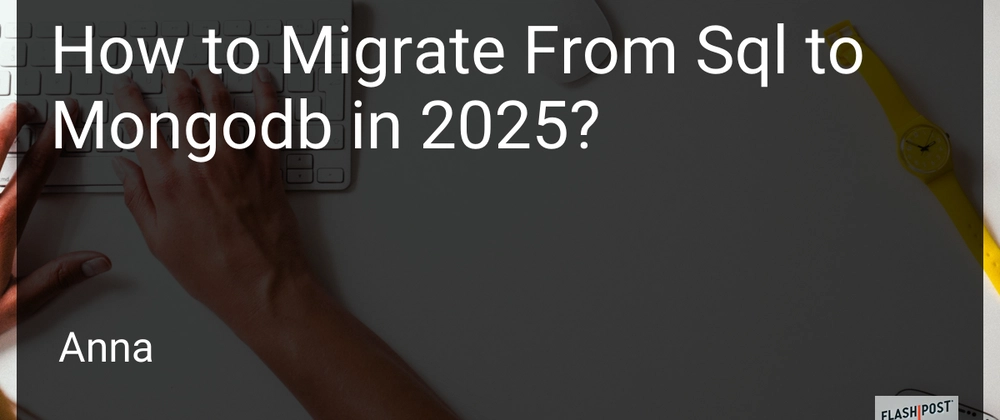The tech landscape of 2025 continues to evolve, and many organizations are opting for more flexible data handling solutions. Migrating from SQL to MongoDB is a strategic move for businesses seeking scalable and high-performance systems. This guide will walk you through the essential steps to ensure a successful transition from SQL to MongoDB.
Why Migrate to MongoDB?
MongoDB, a leading NoSQL database, offers several benefits over traditional SQL databases:
- Scalability: MongoDB's distributed architecture allows it to scale horizontally.
- Flexibility: Document-oriented storage enables handling varying data types without altering the schema.
- Performance: Efficient indexing and powerful query capabilities make MongoDB suitable for high-performance applications.
Preparing for Migration
Assess Your Current System
Start by understanding the complexities of your existing SQL database structure. Identify tables, relationships, and stored procedures that are critical for your applications.
Data Modeling
MongoDB uses a flexible schema design. Consider these best practices:
Denormalization: Unlike SQL, MongoDB often benefits from embedding related data within a single document. This reduces the need for joins and enhances read performance.
Referencing: Use references for relationships that require frequent updates or utilize large datasets.
Indexing: Analyze existing index usage in SQL to determine the equivalent in MongoDB for optimal search performance.
Tools and Techniques
Several tools can facilitate the migration process, including:
- MongoDB Atlas: A cloud-based service that simplifies data import with built-in tools.
-
SQL to MongoDB Transformation Utilities: Tools like
mongoimport,mongoexport, and third-party services that automate data conversion.
Step-by-Step Migration Process
- Define Data Schema in MongoDB: Align your SQL data structure with MongoDB’s schema-less collections.
- Extract Data from SQL: Use SQL export tools to obtain data in a format compatible with MongoDB (e.g., CSV or JSON).
- Transform Data: Use ETL (Extract, Transform, Load) processes to convert data into MongoDB-compatible documents.
-
Load Data into MongoDB: Utilize MongoDB’s tools like
mongoimportto insert transformed data into your collections.
Post-Migration Activities
Verify Data Consistency
Ensure all data transferred accurately. Validate by comparing record counts and sample data points between SQL and MongoDB.
Performance Optimization
After migration, monitor the performance. Create necessary indexes by analyzing query patterns to optimize data retrieval.
Updating Application Logic
Modify your applications to interact with MongoDB's JSON format instead of SQL queries. Look into reading MongoDB data in Discord.js for specific integration examples.
Expanding MongoDB Capabilities
Enhance your MongoDB setup by learning how to extend collections and improve data retrieval:
- Discover how to add an array to an existing collection in MongoDB.
- Explore techniques on joining two collections in MongoDB to simulate SQL joins.
Conclusion
Migrating from SQL to MongoDB in 2025 is a pathway towards leveraging modern database technologies for scalable solutions. By carefully planning your migration process and applying MongoDB’s powerful functionalities, your applications can achieve enhanced efficiency and performance. Stay informed and continually optimize your use of MongoDB to harness its full potential.
Migrating to MongoDB is not just a technical upgrade; it's an opportunity to rebuild and enhance your data infrastructure. Plan meticulously, execute with precision, and prepare your systems for future growth.



Top comments (0)